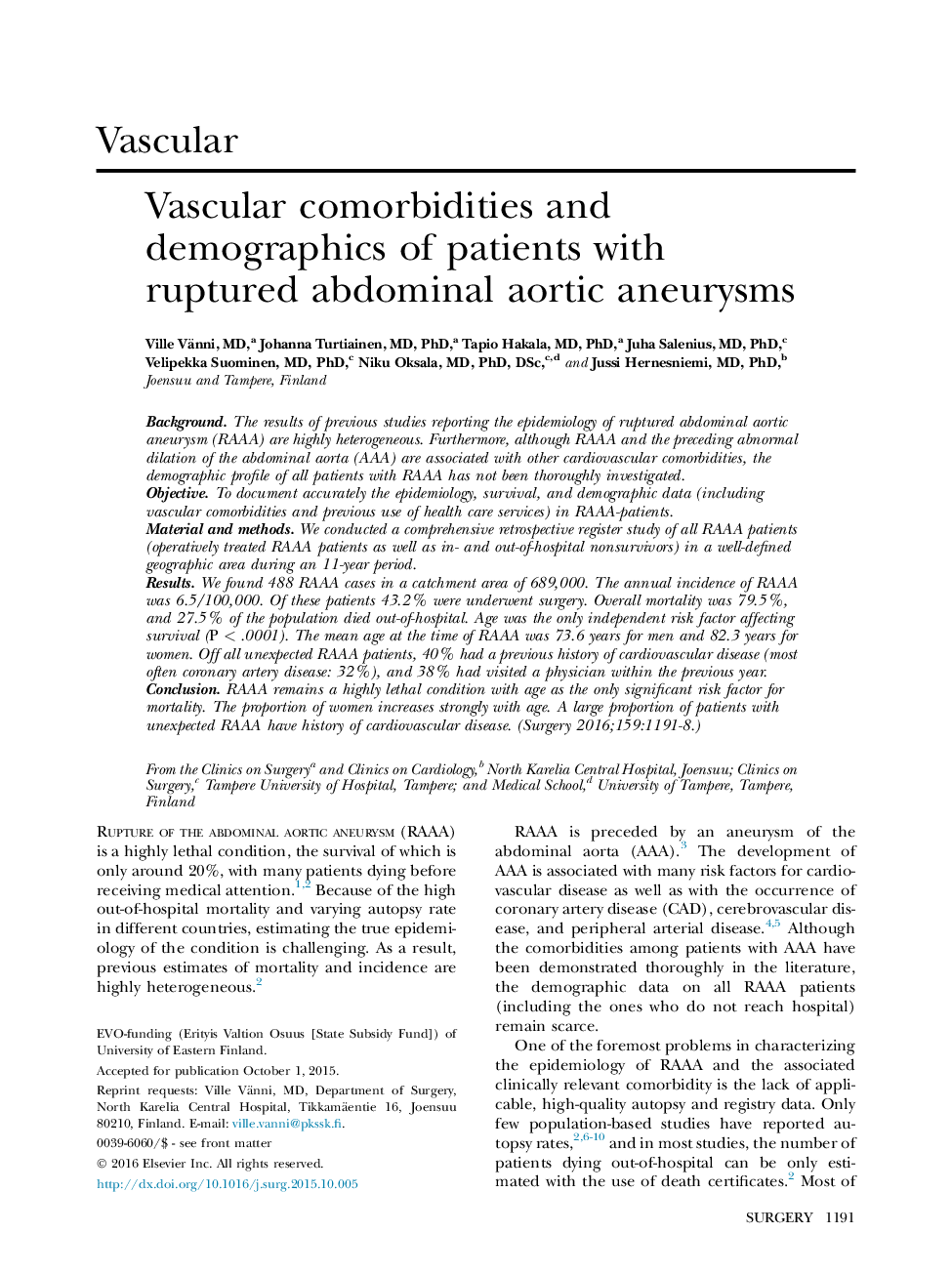| Article ID | Journal | Published Year | Pages | File Type |
|---|---|---|---|---|
| 4306509 | Surgery | 2016 | 8 Pages |
BackgroundThe results of previous studies reporting the epidemiology of ruptured abdominal aortic aneurysm (RAAA) are highly heterogeneous. Furthermore, although RAAA and the preceding abnormal dilation of the abdominal aorta (AAA) are associated with other cardiovascular comorbidities, the demographic profile of all patients with RAAA has not been thoroughly investigated.ObjectiveTo document accurately the epidemiology, survival, and demographic data (including vascular comorbidities and previous use of health care services) in RAAA-patients.Material and methodsWe conducted a comprehensive retrospective register study of all RAAA patients (operatively treated RAAA patients as well as in- and out-of-hospital nonsurvivors) in a well-defined geographic area during an 11-year period.ResultsWe found 488 RAAA cases in a catchment area of 689,000. The annual incidence of RAAA was 6.5/100,000. Of these patients 43.2% were underwent surgery. Overall mortality was 79.5%, and 27.5% of the population died out-of-hospital. Age was the only independent risk factor affecting survival (P < .0001). The mean age at the time of RAAA was 73.6 years for men and 82.3 years for women. Off all unexpected RAAA patients, 40% had a previous history of cardiovascular disease (most often coronary artery disease: 32%), and 38% had visited a physician within the previous year.ConclusionRAAA remains a highly lethal condition with age as the only significant risk factor for mortality. The proportion of women increases strongly with age. A large proportion of patients with unexpected RAAA have history of cardiovascular disease.
